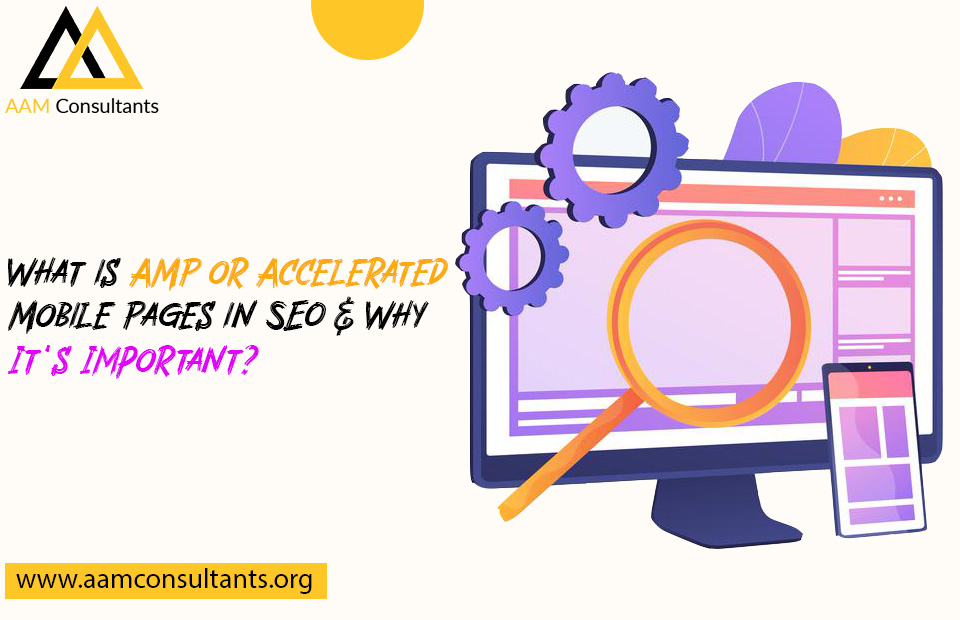AMP or Accelerated Mobile Pages in SEO are a relatively new phenomenon in the world. Google first created AMP to make mobile pages load faster. However, the technology is now used for all web pages, not just mobile ones. If you’re looking to improve your site’s ranking on SERPs and get more traffic, this article will help you understand what AMP is about and how it can positively impact your rankings.
Hire AAM Consultants for link building and SEO Services.
What Is AMP In SEO?
AMP or Accelerated Mobile Pages is a technology developed by Google to help improve the performance of websites on mobile devices. Accelerated Mobile Pages, or AMP, is how Google has continued to innovate and meet the growing demand for speedier websites. Google first created accelerated Mobile Pages in 2015, but it wasn’t until 2017 when Accelerated Mobile Pages started seeing widespread adoption on mobile devices.
Google’s AMP project is an open-source initiative created to deliver mobile content that is fast, engaging, and user-friendly. The purpose of AMP is to improve the overall mobile web experience for users. All websites that use AMP will have a lightning bolt symbol displayed in their search engine results pages (SERP).
Is AMP Important For SEO?
The answer is yes. AMP is important for SEO. Why? Google’s Accelerated Mobile Pages (AMP) project promises to deliver fast mobile search results, and there are some great reasons why it might be a good idea that your website implements the technology too.
This symbol indicates that the website’s content has been optimized for mobile and will load quickly. AMP is already being used by some of the world’s most popular websites, including The Guardian, Forbes, and Huffington Post.
There are many benefits to using AMP on your website:
– Your website will rank higher in mobile search results
– Your website’s bounce rate will be reduced as users stay longer on your pages
– You will achieve a better user experience as pages load quickly without any flashing or unnecessary content
– You can use AMP to show ads and track reader engagement with analytics
If you’re not sure how to get started with AMP, there are plenty of helpful guides online. Alternatively, you could speak to your web developer or SEO specialist for help in getting started.
Understand How AMP Looks In Search Results
When you search for something on Google, you probably expect the results to be almost instantaneous. Unfortunately, we’re talking about a few tenths of a second here, at least on desktop devices. This is where Accelerated Mobile Pages in SEO or AMP comes in. The idea is that if the web pages you see in search results are stripped down to their bare essentials, they will load faster than usual, giving users a great user experience overall.
How To Use AMP Or Accelerated Mobile Pages For Your Website?
Using the AMP HTML format is easy for any website owner. All you have to do is add some code snippets on your website’s CMS (Content Management System), which will enable AMP and speed up page loading of the mobile version of your website. In addition, AMP will also ensure search-engine-friendly pages, which means your website’s SEO (Search Engine Optimization) score will be improved drastically, and you can expect a better ranking in SERPs (search engine result pages).
As per Google research, around 60% of web users now use mobile devices to access the internet daily. So, if your website is not mobile-friendly and the page speed on the mobile version of your website takes more than five seconds to load, then you are losing a lot of potential customers just because they can’t access the information they need from your site in time
AMP or Accelerated Mobile Pages will provide these users with fast-loading pages and ensure a better user experience. Google is continuously working on this project and making the AMP pages more useful for online shoppers, who generally spend a lot of time reading product reviews before making any purchase decision.
The best way to use the AMP HTML format is by installing an AMP plugin for your CMS. This will cover all the code snippets required to enable AMP on your website. Once you have installed the plugin, it’s time to configure it. First, the plugin will ask for your website’s URL and other settings. After that, it will create a new version of your website’s pages which will use the AMP HTML format.
You can also preview how your website will look on mobile devices using Google’s Amp Validator tool. This is a great way to test your website for any errors and see how it looks in Accelerated Mobile Pages format.
If you are using WordPress, there is an official plugin called “AMP for WordPress” created by the team of Automattic (the company behind WordPress). This plugin is available for free download from the official WordPress Plugin Repository. Once you have installed and activated this plugin, it will add a new menu item called “AMP” in your WordPress dashboard. From here, you can publish AMP pages on your website.




